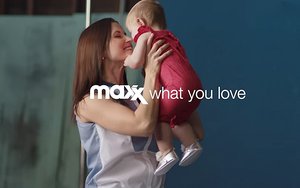 All those department stores wondering where their customers have gone can stop looking: They’re filling the aisles over at T.J. Maxx and the Home
Depot.
All those department stores wondering where their customers have gone can stop looking: They’re filling the aisles over at T.J. Maxx and the Home
Depot.
While they’re in different sectors, both reports show consumers aren’t nervous and are eager to spend at stores (and online) when they see what they want.
That’s disturbing news for department stores, including Nordstrom, JC Penney, and Macy’s, which have been peppering their sales reports with words like disappointing, challenging,
and headwinds.
At TJX, results beat expectations, with quarterly sales rising 10% to $7.5 billion.
The Framingham, Mass.-based retailer -- which owns
value-apparel brands T.J. Maxx and Marshalls, as well as Home Goods -- says its average comparable-store sales rose 7.5%, and net income climbed 10% to $508 million.
advertisement
advertisement
“We
are particularly pleased with our very strong customer traffic, which drove the comp increases at every division,” says CEO Ernie Herrman in its release. “This tells us that our strategies
to bring consumers exciting values on an eclectic and ever-changing mix of the right fashions and brands, sourced from across the globe, are working.”
As a result, the company
also raised its forecast for the year ahead.
And at the Home Depot, results were rosy too, with the Atlanta-based DIY retailer reporting a 9% jump in sales to $22.8 billion for the
first quarter of its fiscal year. Comparable-store sales added 6.5%, with those in the U.S. gaining 7.4%. Net earnings were $1.8 billion, a 14.2% leap from $1.6 billion in the same period a year ago.
And it, too, hiked its forecast for the year ahead.
Meanwhile, in a week that saw Macy’s quarterly sales take the sharpest fall since the recession, Kohl’s is the latest
department store to join the apology club. It recently announced that overall sales slipped 3.7% for the first quarter to $3.97 billion, and same-store sales fell 3.9%. Calling the quarter a
challenging one, it said net income sank to $58 million, from $127 million in the same period a year ago.